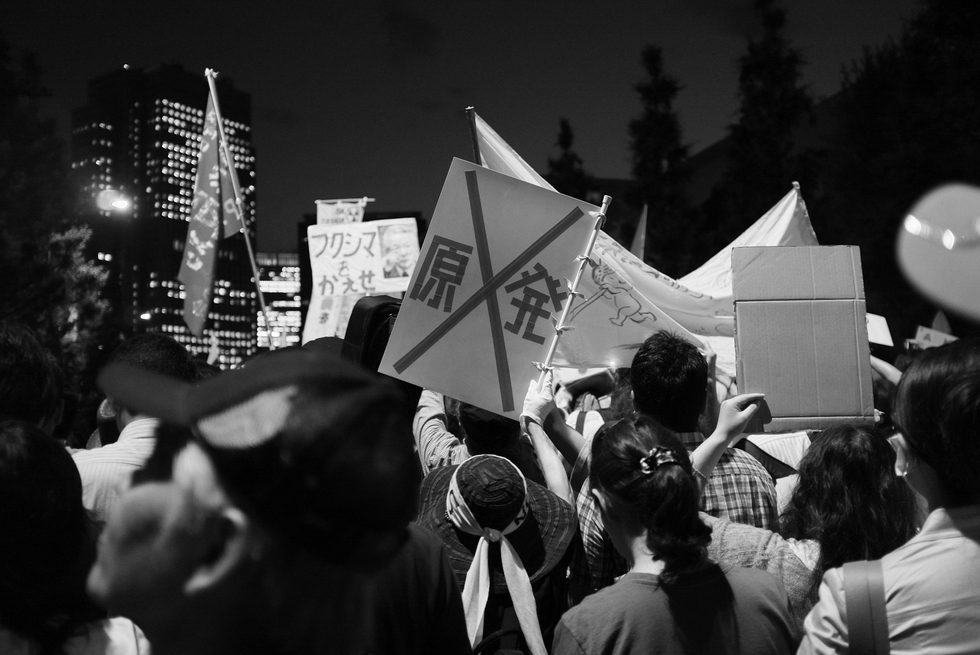Too Many Crises to Remember
From the Series: 3.11 Politics in Disaster Japan: Ten Years Later
From the Series: 3.11 Politics in Disaster Japan: Ten Years Later

Since 2011, the media coverage of the 3.11 disaster has ebbed and become an annual media ritual. Most people seem to be busy in their own business of everyday life, and they become increasingly less aware of the fact that people in Tohoku (and particularly in Fukushima Prefecture) are still struggling with the aftereffects of the earthquake. Some have left the Tohoku area, while others stay only to get older. Most people in Tokyo seem to have forgotten the Fukushima nuclear plant incident or may want to forget, as it is too traumatic. They unconsciously know that it is not “under control” even as Prime Minister Abe said this at his speech in 2013 to bid to host the Tokyo Olympics.
The Great East Japan Earthquake in 2011 was not the last natural disaster in Japan: since then, Japan has faced a series of large earthquakes in Nagano in 2014, in Kumamoto in 2016, in Osaka and Hokkaido in 2018, and in Fukushima in February 2021. All of them have caused severe damaged. Typhoons have regularly attacked and devastated different areas with floods almost every year, probably part of climate change and global warming. The 2010s in Japan will be remembered as the period of natural disasters, which were so frequent and intense that the government seems simply to have given up all reconstruction projects, even while they sought to promote the fantasy of recovery from the disaster. The 2020 Tokyo Olympic and Paralympic Games was originally expected to complete the fantasy: it was supposed to be a symbol of overcoming the disaster. It has, however, revealed that the gap between the reality and the fantasy has been widening over the last ten years.
In my essay in 2011, I wrote “[i]t may be wishful thinking but we are seeing a newly emerging street politics organized by young people who previously have had no interest in politics.” It is true that interesting political movements emerged just after the earthquake. For instance, an anarchist group called the Amateur Riot (Shirōto no Ran)—formed around a recycle shop—successfully organized a series of protest rallies in 2011: on April 10th in (their neighborhood) Koenji, on May 7th in Shibuya, and on June 11th in Shinjuku. Large crowds (15,000–20,000 people) gathered each time, and these numbers grew.
Following this, Metropolitan Coalition Against Nukes (Shutoken Han-Genpatsu Rengō=Hangenren) organized a series of protest gatherings and street rallies: weekly gatherings on Friday evenings in front of the prime minister's house was the most successful project. In the summer of 2012, the number of participants reached its peak at 200,000: it was the one of the largest political gatherings since the student movement in 1968 in Japan, apart from anti–U.S. military base movements in Okinawa. The Japan Democratic Party’s Prime Minister, Yoshihiko Noda had no choice but to see the core organizers to discuss.
As it turned out, this was the peak of the anti-nuke movement; it was also the beginning of our disappointment in politics. The movement was transformed into a media spectacle and gradually lost the interest of the population, even though the radiation problem has still not been resolved, even ten years later. A series of natural disasters and other political issues such as the legislation of state secrecy laws in 2013; collective self-defense legislation in 2015, compromising the integrity of Article 9 of the constitution; seemingly unending political corruption scandals under the Liberal Democratic Party’s Abe regime; and the COVID-19 pandemic have overshadowed the nuclear problem.
Just after the earthquake in 2011, we hoped that we might be able to turn this crisis into an opportunity to change the world. It is, however, even more difficult to be optimistic now.
Read Yoshitaka Mōri’s essay “From Shaking Islands, A Nation Divided,” published July 26, 2011.